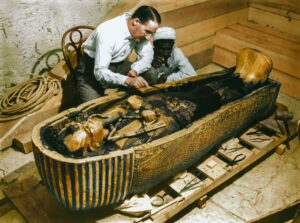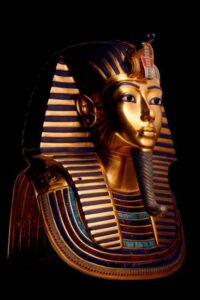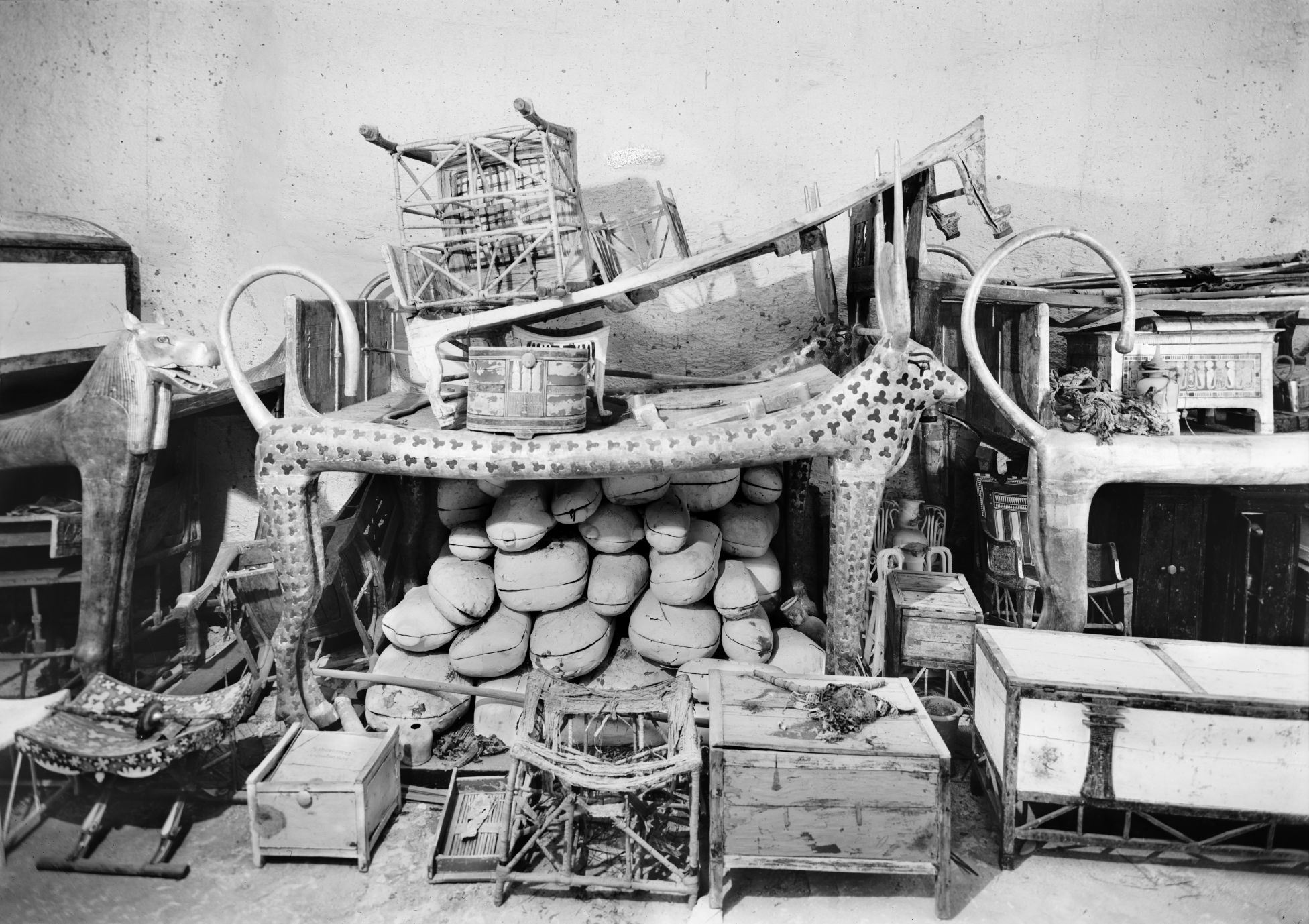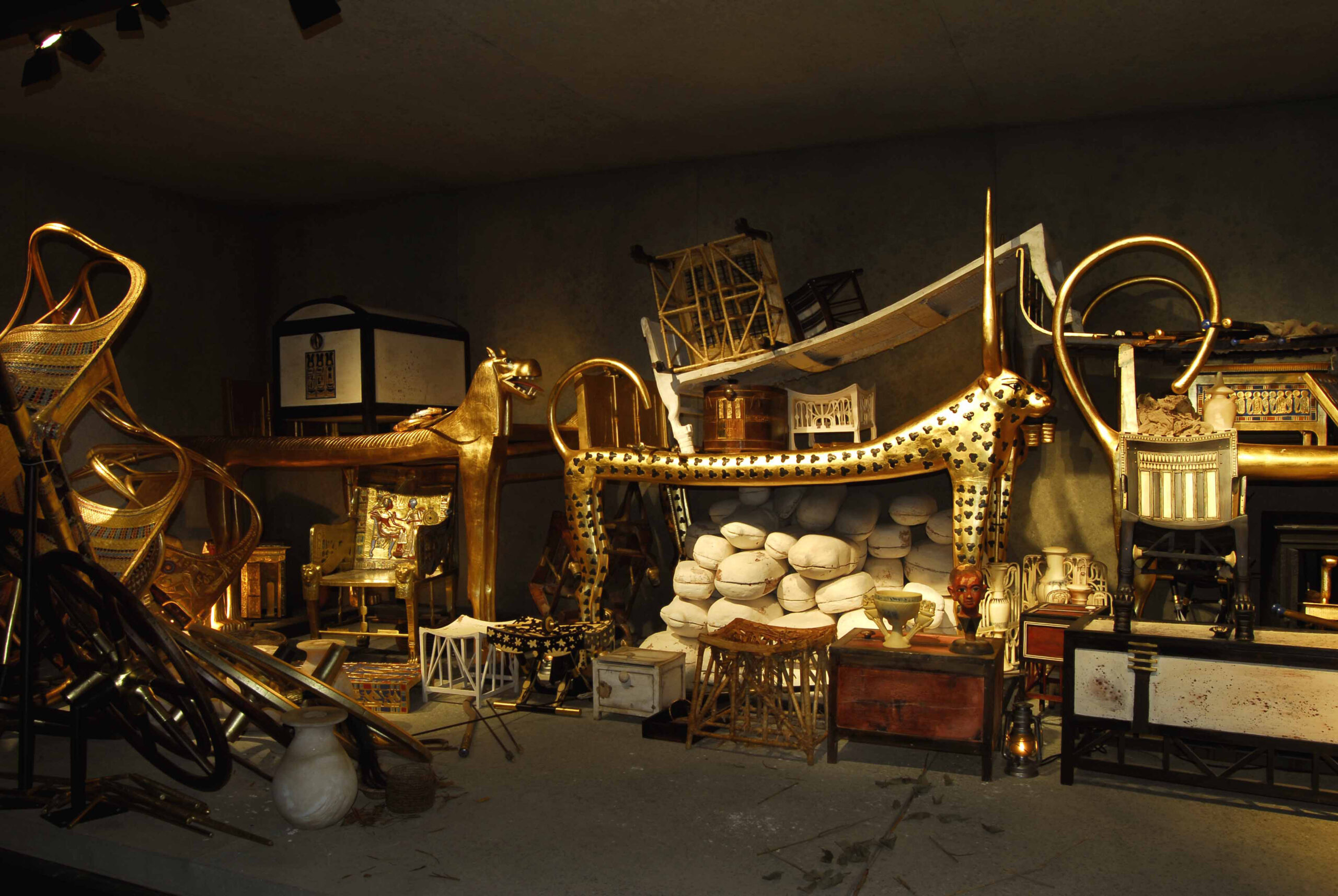The huge exhibition TUTANKHAMUN – HIS TOMB AND HIS TREASURES offers you a once-in-a-lifetime insight into the archaeology of ancient Egypt. Go on a fantastical voyage and experience the burial chambers and treasures of the King exactly as they were discovered in 1922 by Howard Carter.
HOWARD CARTER – ARCHAEOLOGIST, ARTIST AND DISCOVERER OF A SENSATIONAL FIND
Howard Carter’s biography is unique among archaeologists. At 17 he was a talented artist and was initially engaged in copying the richly coloured wall paintings in the tombs of Middle Egypt on behalf of the Egypt Exploration Fund. Soon afterwards he began his first excavations under the guidance of his teacher Flinders Petrie.
 In 1900 the talented young archaeologist rose to the position of Chief Inspector of the Egyptian Antiquities Service. However, just a few years later an altercation with unruly tourists was to put an end to his successful career. In 1909 Howard Carter began his collaboration with Lord Carnarvon. Carter eventually convinced the Earl to begin a very special project.
In 1900 the talented young archaeologist rose to the position of Chief Inspector of the Egyptian Antiquities Service. However, just a few years later an altercation with unruly tourists was to put an end to his successful career. In 1909 Howard Carter began his collaboration with Lord Carnarvon. Carter eventually convinced the Earl to begin a very special project.
The hunt for the tomb of the forgotten Pharaoh Tutankhamun in the Valley of the Kings
Lord Carnarvon financed the undertaking for five years from 1917 but to no avail. In November 1922, during the last digging season, Carter eventually struck lucky and presented his sensational discovery to the astonished world. This unleashed an unprecedented press furore and a real Tutankhamun fever that influenced the Golden Twenties era.
A unique special exhibition about the life of the excavator
To complement the exhibition of Howard Carter’s important discovery, TUTANKHAMUN – HIS TOMB AND HIS TREASURES is now putting on a unique exhibition about the life of the excavator. Significant documents are presented alongside sumptuous watercolours by the archaeologist using highly realistic facsimile technology. Many of the pictures and papers in the “Carter Room” have never been shown before in museums.
“I see wonderful things”
HOWARD CARTER, 1922
TUTANKHAMUN – A KING AND HIS TIM
 Tutankhamun ascended to the throne in 1332 BC at the age of 9 as one of the last kings of the 18th Dynasty. His father was the heretic king Akhenaten; the name of his mother is still unknown. According to the latest studies, the young King suffered from serious illnesses. The most significant achievement of his reign was the rejection of his father’s radical religious reforms, which had destabilised the country.
Tutankhamun ascended to the throne in 1332 BC at the age of 9 as one of the last kings of the 18th Dynasty. His father was the heretic king Akhenaten; the name of his mother is still unknown. According to the latest studies, the young King suffered from serious illnesses. The most significant achievement of his reign was the rejection of his father’s radical religious reforms, which had destabilised the country.
His death is a mystery to this day
Tutankhamun died after nine years on the throne, probably from an infection resulting from an open knee injury.
HIS TOMB – IMAGES FOR ETERNITY
The photographer Harry Burton documented every aspect of the work in Tutankhamun’s tomb, from the first inventory-taking to the transfer of the last find to the museum. Only in Burton’s photographs did the Pharaoh achieve true immortality.
Carter’s eye and memory
The Metropolitan Museum sent Burton as the excavation photographer – he was “Carter’s eye and memory”. With his enormous camera and cumbersome negative plates, he tirelessly trekked between the discovery site, his laboratory (which he had set up in the tomb of Sethos II), and his improvised darkroom in the neighbouring tomb (no. 55).
Every step of the excavation work was documented in photographs, right down to the smallest detail
The results of his labours are 2,800 large-format glass negatives, which document all of the finds, their location in the tomb, and every single step of the excavators’ work with the utmost precision. Carter patiently and unconditionally encouraged him like no other member of his team and, thanks to his photos, Burton was the first and only archaeological photographer to achieve worldwide fame.


EXPERTLY CRAFTED REPLICAS
 Exhibitions about Egypt’s fascinating works of art have been enjoying great popularity for many years. TUTANKHAMUN – HIS TOMB AND HIS TREASURES aims to set a new trend here: visitors are to be able to experience the history of an exciting excavation. However, this ambition comes up against a limitation: sensitive original objects that require preservation cannot and should not be presented in complex exhibition scenarios.
Exhibitions about Egypt’s fascinating works of art have been enjoying great popularity for many years. TUTANKHAMUN – HIS TOMB AND HIS TREASURES aims to set a new trend here: visitors are to be able to experience the history of an exciting excavation. However, this ambition comes up against a limitation: sensitive original objects that require preservation cannot and should not be presented in complex exhibition scenarios.
THE TREASURES
The gigantic Tutankhamun exhibition is home to over 1,000 exhibits. You can catch a first glimpse of the impressive artistic abundance of ancient Egypt here.

EXHIBITION TOUR
Follow Tutanchamun on

